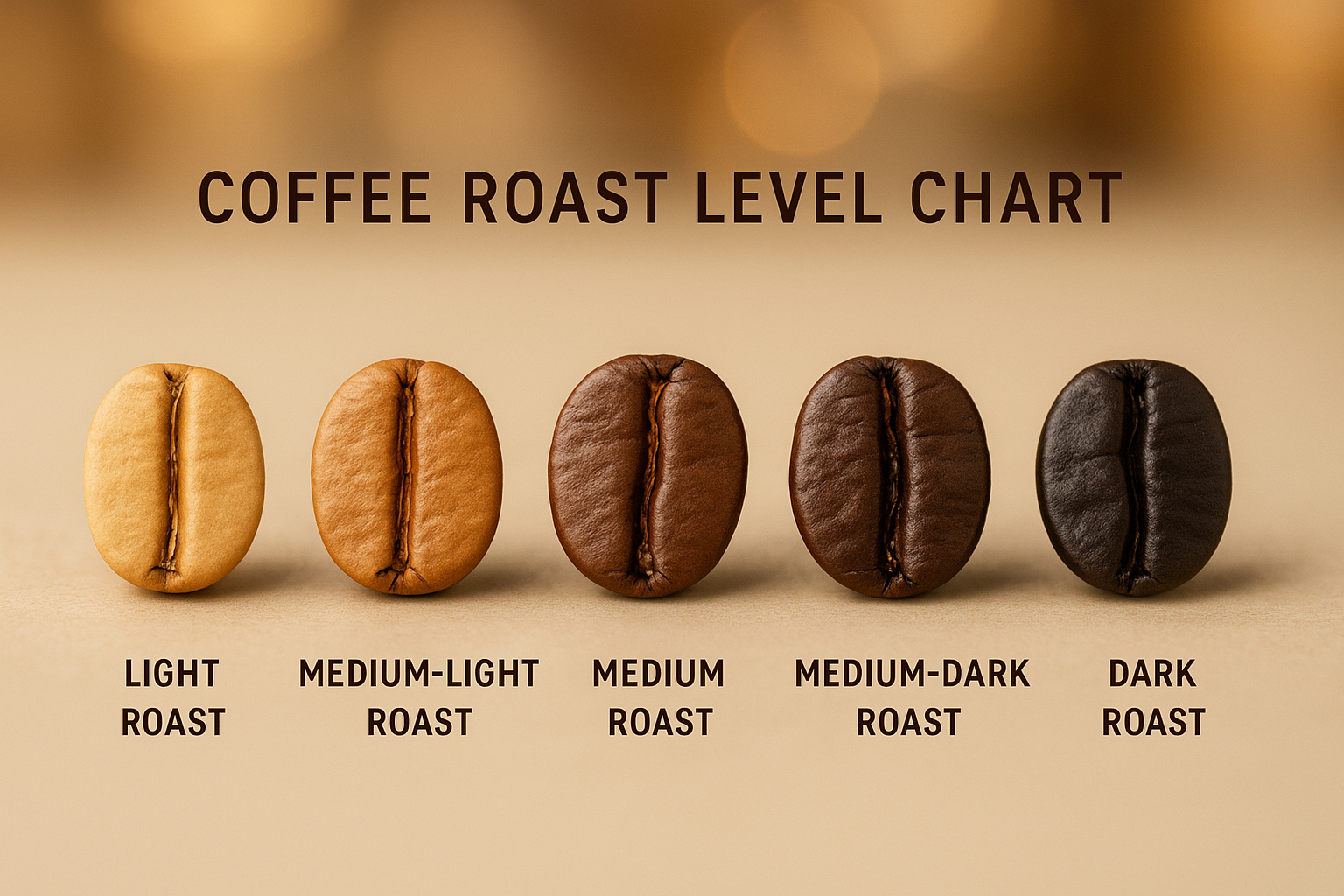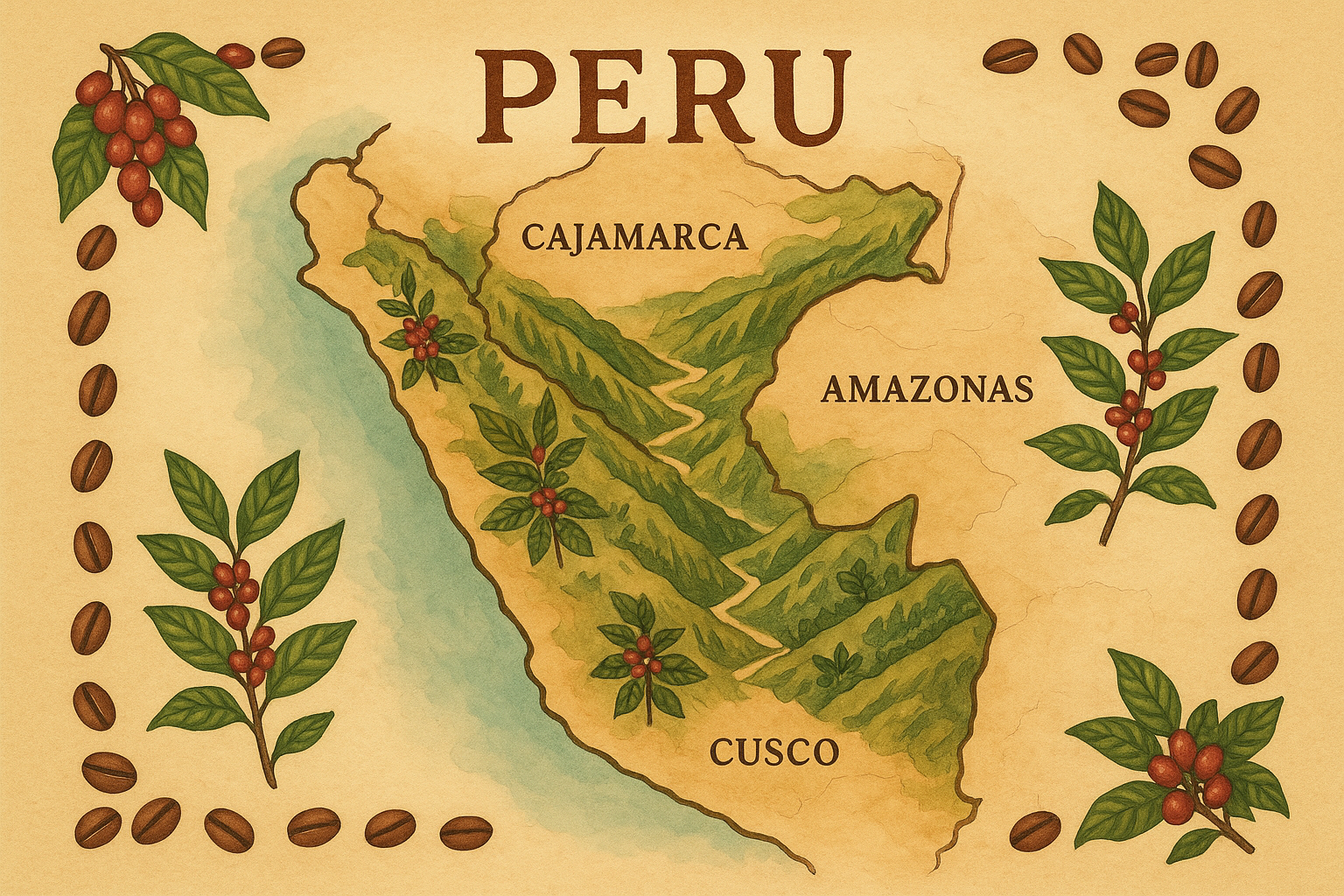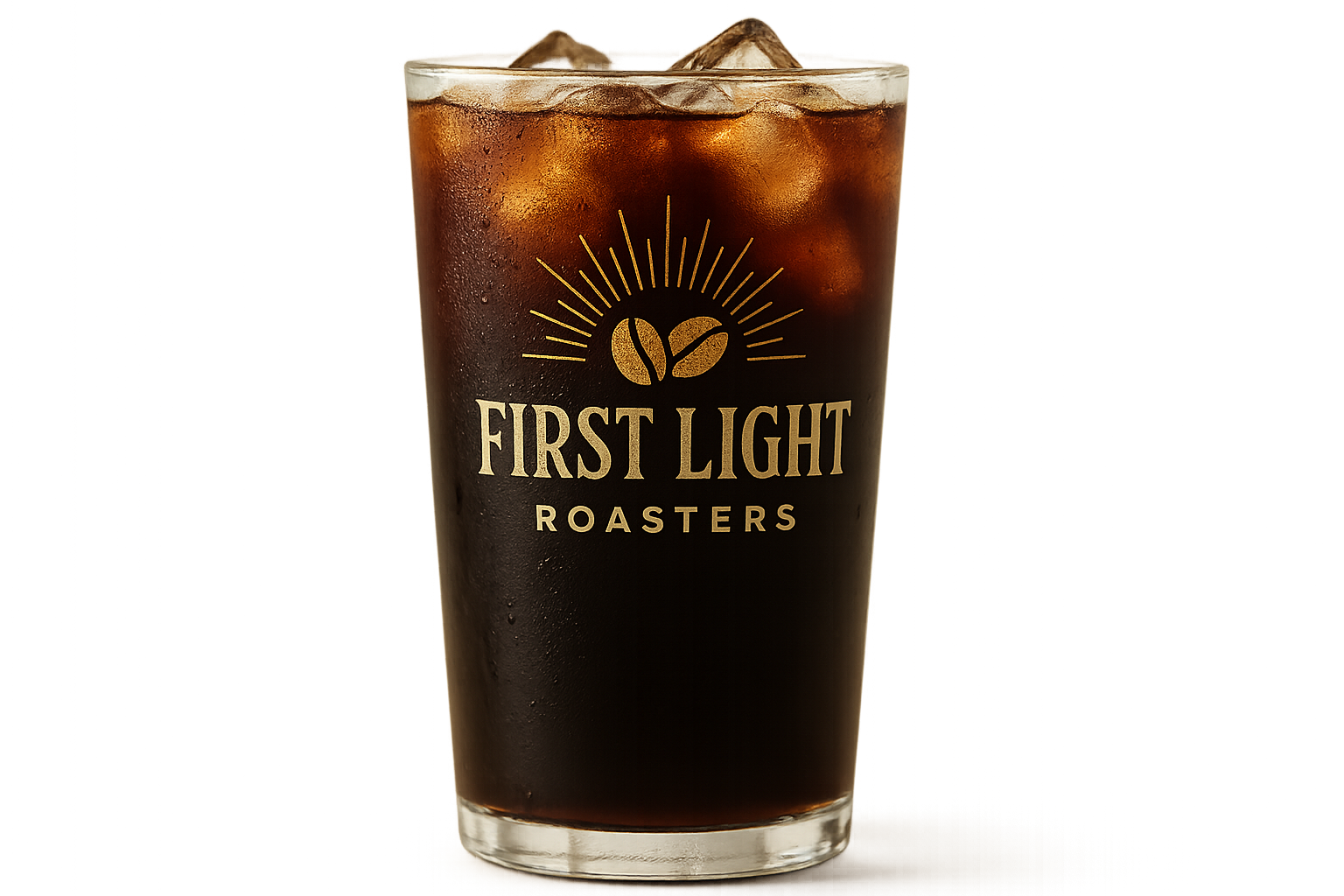
What Do Roast Levels Mean for Peruvian Coffee
When you pick up a bag of Peruvian coffee, one of the first things you’ll notice is the roast level. It might say light roast, medium roast or dark roast. But what do those terms actually mean? More importantly, how do they change the taste, body and aroma of your coffee?
Roast level plays a huge role in how you experience your cup. It determines how much of the coffee’s natural flavor is preserved, how sweet or bitter it tastes and even how it feels on your tongue. For Peruvian coffee, which is known for its clean profile and balanced character, roast level can enhance or obscure different flavor notes.
In this blog, we’ll walk through what each roast level means, how it affects Peruvian coffee specifically and how to choose the one that’s right for you.
What Is a Coffee Roast
Coffee beans start out as green seeds inside a fruit called a coffee cherry. These green beans are dense, grassy and completely undrinkable until they’re roasted. Roasting is the process of applying heat to the beans to bring out their aroma, color and flavor. It changes the chemical structure of the bean, caramelizes sugars and creates the compounds that give coffee its signature richness.
The longer the roast, the darker and oilier the bean becomes. Lighter roasts are roasted for a shorter time, retaining more of the original flavor from the region. Darker roasts are cooked longer, which reduces acidity and creates bolder, more roasted notes.
How Roast Levels Are Measured
Roast levels are generally grouped into three categories:
-
Light Roast
-
Medium Roast
-
Dark Roast
Some roasters use more detailed terms like cinnamon, city, full city or French roast, but most consumers will see one of the three main categories on packaging.
Roasters determine the roast level by color, temperature and time. They may also use cracking sounds that occur during the roast process. The first crack signals the bean is starting to release moisture and expand. The second crack means the oils are beginning to come to the surface.
Let’s look at each roast level and how it affects Peruvian coffee.
Light Roast Peruvian Coffee
Light roasts are roasted just until the first crack, which occurs around 385 to 401 degrees Fahrenheit. These beans are light brown, dry on the surface and dense. They preserve most of the bean’s natural flavors and showcase the origin characteristics.
For Peruvian coffee, a light roast brings out:
-
Lemon and orange citrus
-
Floral tones like jasmine or chamomile
-
Apple, peach or stone fruit notes
-
Crisp acidity
-
Lighter body and clean finish
Light roast is perfect if you want to taste the nuances of the origin. It’s ideal for manual brewing methods like pour over, Chemex or AeroPress. You’ll notice more brightness and sweetness, and the cup feels refreshing rather than heavy.
However, light roasts can be too sharp or thin for some drinkers, especially those used to darker blends.
Medium Roast Peruvian Coffee
Medium roasts go slightly beyond the first crack and finish before the second crack, usually between 410 to 428 degrees Fahrenheit. These beans are medium brown with a balanced structure. They retain some origin flavors while introducing caramelization and body.
Peruvian coffee at medium roast often highlights:
-
Milk chocolate or cocoa
-
Almond, cashew or hazelnut
-
Gentle citrus like tangerine
-
Balanced acidity
-
Smooth body and round mouthfeel
This is the most popular roast level because it appeals to both specialty coffee fans and casual drinkers. It works well for all brewing methods, from drip to French press to espresso. Medium roast enhances the natural qualities of Peruvian coffee without overwhelming them.
At First Light Roasters, we use a medium roast for our Peruvian single origin because it brings out its sweet and nutty character while preserving clarity.
Dark Roast Peruvian Coffee
Dark roasts are roasted past the second crack, above 437 degrees Fahrenheit. These beans are dark brown to almost black, often shiny from surface oils. The roast flavor dominates, and origin flavors become more muted.
For Peruvian coffee, a dark roast can bring:
-
Dark chocolate
-
Burnt sugar or molasses
-
Toasted nuts
-
Low acidity
-
Heavy body and long aftertaste
Dark roasts are best for people who enjoy bold, intense coffee. They perform well in espresso machines and in milk-based drinks like lattes or cappuccinos. However, they can mask the unique qualities of Peruvian coffee and may introduce bitterness if over-roasted.
If you enjoy a strong, traditional cup with a smoky edge, dark roast could be your go-to. But if you’re looking to explore what makes Peruvian beans special, a lighter roast may serve you better.
How Roast Level Affects Brewing
Different roast levels respond differently to brewing methods. Here is a quick guide:
-
Light Roast: Best for pour over, AeroPress, cold brew
-
Medium Roast: Good for drip, French press, espresso, pour over
-
Dark Roast: Best for espresso, moka pot, milk drinks
Lighter roasts are more soluble and require finer grinds and longer brew times. Darker roasts are easier to extract but can become harsh if over-brewed.
Always adjust your grind size and water temperature based on roast. For example, use hotter water for light roasts and slightly cooler water for dark roasts.
Which Roast Level Should You Choose
Here are a few ways to decide:
-
Choose light roast if you enjoy bright, fruity, floral coffee and want to explore origin character.
-
Choose medium roast if you like balance, sweetness and a versatile cup that works in any method.
-
Choose dark roast if you prefer bold, strong coffee with minimal acidity and a roasted edge.
Your preference may also depend on time of day. Light roasts are refreshing in the morning. Medium is great for midday or guests. Dark roast offers comfort on cold nights or in rich milk drinks.
What Roast Level Does First Light Roasters Use
At First Light Roasters, our Peruvian single origin is roasted to a medium level. This preserves its smooth cocoa base and subtle citrus notes while providing enough body for both black and milk-based drinks.
We roast in small batches to maintain freshness and flavor integrity. Our goal is to let the bean’s natural beauty shine while making it approachable for everyday enjoyment.
Final Thoughts
Roast level matters. It can turn a delicate, floral coffee into something smoky and bold, or vice versa. For Peruvian coffee, choosing the right roast helps highlight what the region does best: balance, smoothness and clarity.
Whether you prefer the brightness of a light roast or the richness of a dark cup, understanding roast levels gives you the power to shape your experience. Try a few versions of the same bean to see how different roasts affect flavor.
When you understand what roast level means, every sip becomes more intentional. You’re not just drinking coffee. You’re exploring an origin, a process and a story one roast at a time.




Leave a comment
This site is protected by hCaptcha and the hCaptcha Privacy Policy and Terms of Service apply.